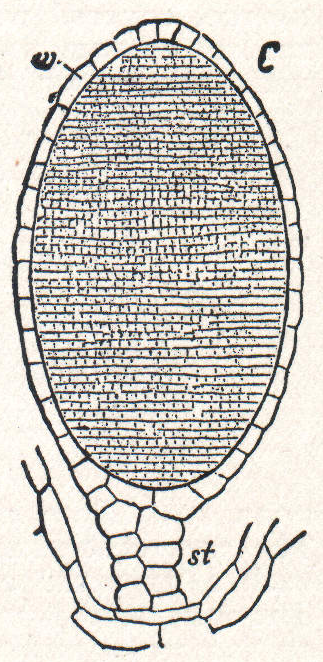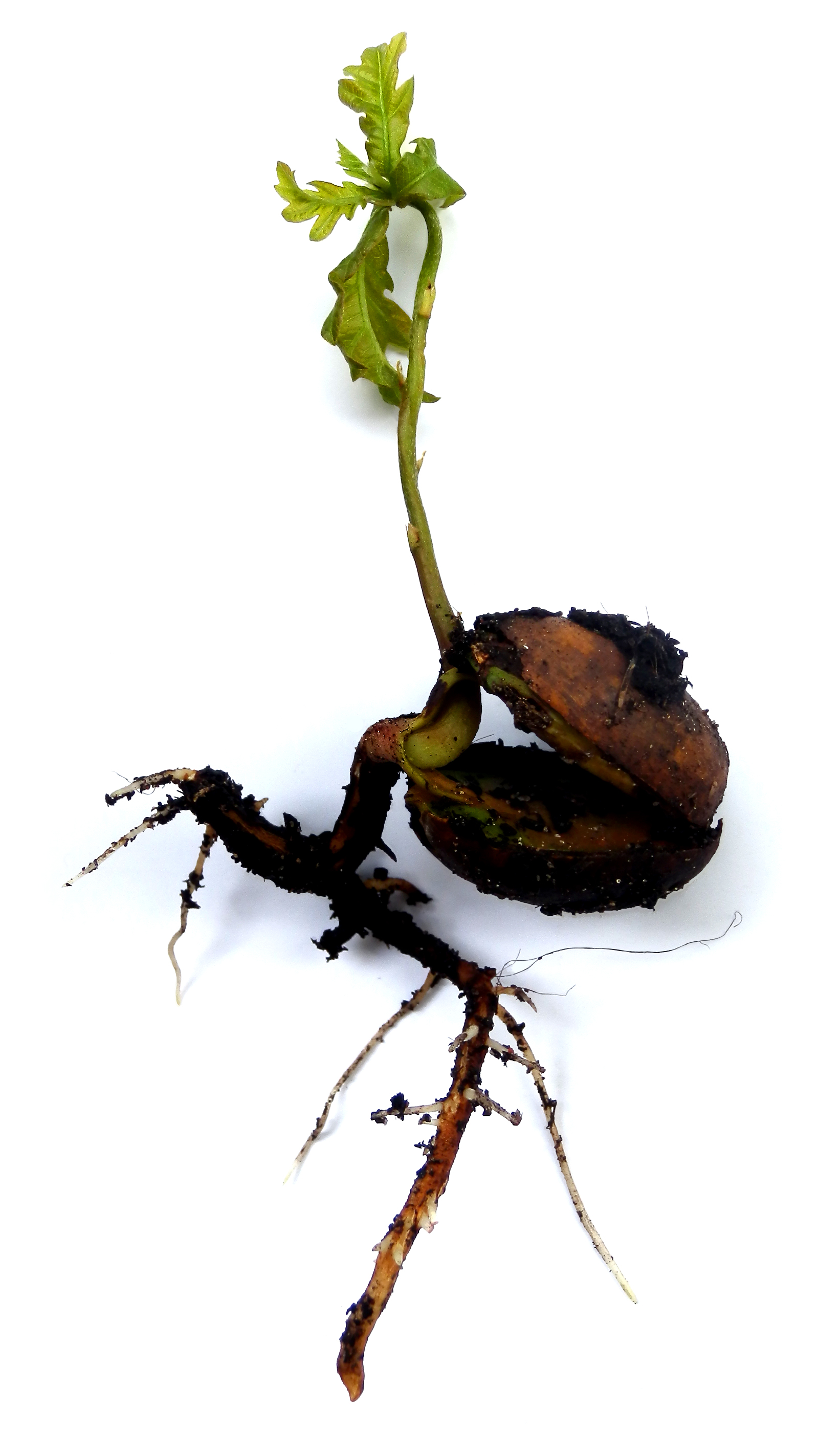|
Phytophthora Uliginosa
''Phytophthora uliginosa'' is a non-papillate homothallic plant pathogen that mainly infects European oak. It differs from other species of the genus (like '' P. fragariae'') by its large oogonia with exclusively paragynous antheridia and the predominant occurrence of ellipsoid sporangia A sporangium (; from Late Latin, ) is an enclosure in which spores are formed. It can be composed of a single cell or can be multicellular. Virtually all plants, fungi, and many other lineages form sporangia at some point in their life cy ... with markedly wide exit pores. ''P. uliginosa'' is separated from '' P. europaea'' by its larger oogonia without tapering bases and its greater aggressiveness on '' Quercus robur''. References Further reading * * * * uliginosa Water mould plant pathogens and diseases Tree diseases Protists described in 2002 {{plant-disease-stub ... [...More Info...] [...Related Items...] OR: [Wikipedia] [Google] [Baidu] |
Thomas Jung (biologist)
Thomas Jung may refer to: * Thomas Jung (politician) (born 1961), German politician (SPD) * Thomas Jung (rower) (born 1969), German rower * Thomas Jung (conductor) (born 1984), German conductor {{hndis, Jung, Thomas ... [...More Info...] [...Related Items...] OR: [Wikipedia] [Google] [Baidu] |
Papillate
This glossary of botanical terms is a list of definitions of terms and concepts relevant to botany and plants in general. Terms of plant morphology are included here as well as at the more specific Glossary of plant morphology and Glossary of leaf morphology. For other related terms, see Glossary of phytopathology, Glossary of lichen terms, and List of Latin and Greek words commonly used in systematic names. A B ... [...More Info...] [...Related Items...] OR: [Wikipedia] [Google] [Baidu] |
Homothallic
Homothallic refers to the possession, within a single organism, of the resources to reproduce sexually; i.e., having male and female reproductive structures on the same thallus. The opposite sexual functions are performed by different cells of a single mycelium. It can be contrasted to heterothallic. It is often used to categorize fungi. In yeast, heterothallic cells have mating types a and α. An experienced mother cell (one that has divided at least once) will switch mating type every cell division cycle because of the ''HO'' allele. Sexual reproduction commonly occurs in two fundamentally different ways in fungi. These are outcrossing (in heterothallic fungi) in which two different individuals contribute nuclei to form a zygote, and self-fertilization or selfing (in homothallic fungi) in which both nuclei are derived from the same individual. Homothallism in fungi can be defined as the capability of an individual spore to produce a sexually reproducing colony when propagated ... [...More Info...] [...Related Items...] OR: [Wikipedia] [Google] [Baidu] |
Plant Pathogen
Plant pathology (also phytopathology) is the scientific study of diseases in plants caused by pathogens (infectious organisms) and environmental conditions (physiological factors). Organisms that cause infectious disease include fungi, oomycetes, bacteria, viruses, viroids, virus-like organisms, phytoplasmas, protozoa, nematodes and parasitic plants. Not included are ectoparasites like insects, mites, vertebrate, or other pests that affect plant health by eating plant tissues. Plant pathology also involves the study of pathogen identification, disease etiology, disease cycles, economic impact, plant disease epidemiology, plant disease resistance, how plant diseases affect humans and animals, pathosystem genetics, and management of plant diseases. Overview Control of plant diseases is crucial to the reliable production of food, and it provides significant problems in agricultural use of land, water, fuel and other inputs. Plants in both natural and cultivated populat ... [...More Info...] [...Related Items...] OR: [Wikipedia] [Google] [Baidu] |
European Oak
''Quercus robur'', commonly known as common oak, pedunculate oak, European oak or English oak, is a species of flowering plant in the beech and oak family, Fagaceae. It is a large tree, native to most of Europe west of the Caucasus. It is widely cultivated in temperate regions elsewhere and has escaped into the wild in scattered parts of China and North America. Description ''Quercus robur'' is a large deciduous tree, with circumference of grand oaks from to an exceptional . The Majesty Oak with a circumference of is the thickest tree in Great Britain. The Brureika ( Bridal Oak) in Norway with a circumference of (2018) and the Kaive Oak in Latvia with a circumference of are among the thickest trees in Northern Europe. The largest historical oak was known as the Imperial Oak from Bosnia and Herzegovina. This specimen was recorded at 17.5 m in circumference at breast height and estimated at over 150 m³ in total volume. It collapsed in 1998. The species has lobed and near ... [...More Info...] [...Related Items...] OR: [Wikipedia] [Google] [Baidu] |
Phytophthora Fragariae
''Phytophthora fragariae'' is a fungus-like (oomycete) plant pathogen that causes red stele, otherwise known as Lanarkshire disease, in strawberries. Symptoms of red stele can include a red core in the roots, wilting of leaves, reduced flowering, stunting, and bitter fruit. The pathogen is spread via zoospores swimming through water present in the soil, released from sporangia. Hosts and symptoms Scientist thought at first that there are 2 varieties of ''Phytophthora fragariae'': ''P. fragariae'' var. ''fragariae'', which refers to the pathogen that attacks strawberries, and ''P. fragariae'' var. ''rubi'', which refers to the variety that is the raspberry pathogen. Recently, the latter is considered a distinct species, '' P. rubi''. The oomycete does not infect tomato, apple, potato, turnip, cauliflower, chickweed, groundsel, or corn spurry. In 1958, it was reported that there was a race of ''P. fragariae'' var. ''fragariae'' that infected loganberries. Other plants have ... [...More Info...] [...Related Items...] OR: [Wikipedia] [Google] [Baidu] |
Oogonia
An oogonium (plural oogonia) is a small diploid cell which, upon maturation, forms a primordial follicle in a female fetus or the female (haploid or diploid) gametangium of certain thallophytes. In the mammalian fetus Oogonia are formed in large numbers by mitosis early in fetal development from primordial germ cells. In humans they start to develop between weeks 4 and 8 and are present in the fetus between weeks 5 and 30. Structure Normal oogonia in human ovaries are spherical or ovoid in shape and are found amongst neighboring somatic cells and oocytes at different phases of development. Oogonia can be distinguished from neighboring somatic cells, under an electron microscope, by observing their nuclei. Oogonial nuclei contain randomly dispersed fibrillar and granular material whereas the somatic cells have a more condensed nucleus that creates a darker outline under the microscope. Oogonial nuclei also contain dense prominent nucleoli. The chromosomal material in the nucleu ... [...More Info...] [...Related Items...] OR: [Wikipedia] [Google] [Baidu] |
Paragynous
{{Short pages monitor ... [...More Info...] [...Related Items...] OR: [Wikipedia] [Google] [Baidu] |
Antheridia
An antheridium is a haploid structure or organ producing and containing male gametes (called ''antherozoids'' or sperm). The plural form is antheridia, and a structure containing one or more antheridia is called an androecium. Androecium is also the collective term for the stamens of flowering plants. Antheridia are present in the gametophyte phase of cryptogams like bryophytes and ferns. Many algae and some Fungus, fungi, for example ascomycetes and water moulds, also have antheridia during their reproductive stages. In gymnosperms and angiosperms, the male gametophytes have been reduced to Pollen, pollen grains and in most of these the antheridia have been reduced to a single generative cell within the pollen grain. During pollination, this generative cell divides and gives rise to sperm cells. The female counterpart to the antheridium in cryptogams is the archegonium, and in flowering plants is the gynoecium. An antheridium typically consists of sterile cell (biology), cells a ... [...More Info...] [...Related Items...] OR: [Wikipedia] [Google] [Baidu] |
Sporangia
A sporangium (; from Late Latin, ) is an enclosure in which spores are formed. It can be composed of a single cell or can be multicellular. Virtually all plants, fungi, and many other lineages form sporangia at some point in their life cycle. Sporangia can produce spores by mitosis, but in nearly all land plants and many fungi, sporangia are the site of meiosis and produce genetically distinct haploid spores. Fungi In some phyla of fungi, the sporangium plays a role in asexual reproduction, and may play an indirect role in sexual reproduction. The sporangium forms on the sporangiophore and contains haploid nuclei and cytoplasm. Spores are formed in the sporangiophore by encasing each haploid nucleus and cytoplasm in a tough outer membrane. During asexual reproduction, these spores are dispersed via wind and germinate into haploid hyphae. Although sexual reproduction in fungi varies between phyla, for some fungi the sporangium plays an indirect role in sexual reproducti ... [...More Info...] [...Related Items...] OR: [Wikipedia] [Google] [Baidu] |
Phytophthora Europaea
''Phytophthora europaea'' is a non-papillate homothallic plant pathogen that mainly infects European oak. It differs from other species of the genus (like '' P. fragariae'') by producing oogonia with tapered bases, irregular walls and exclusively paragynous antheridia. It has also been found in the United States The United States of America (U.S.A. or USA), commonly known as the United States (U.S. or US) or America, is a country primarily located in North America. It consists of 50 states, a federal district, five major unincorporated territorie .... References Further reading * * * * europaea Water mould plant pathogens and diseases Tree diseases Protists described in 2002 {{plant-disease-stub ... [...More Info...] [...Related Items...] OR: [Wikipedia] [Google] [Baidu] |
Quercus Robur
''Quercus robur'', commonly known as common oak, pedunculate oak, European oak or English oak, is a species of flowering plant in the beech and oak family, Fagaceae. It is a large tree, native plant, native to most of Europe west of the Caucasus. It is widely cultivated in temperate regions elsewhere and has escaped into the wild in scattered parts of China and North America. Description ''Quercus robur'' is a large deciduous tree, with circumference of grand oaks from to an exceptional . The Majesty Oak with a circumference of is the thickest tree in Great Britain. The Brureika (Bridal Oak) in Norway with a circumference of (2018) and the Kaive Oak in Latvia with a circumference of are among the thickest trees in Northern Europe. The largest historical oak was known as the Imperial Oak from Bosnia and Herzegovina. This specimen was recorded at 17.5 m in circumference at breast height and estimated at over 150 m³ in total volume. It collapsed in 1998. The species has l ... [...More Info...] [...Related Items...] OR: [Wikipedia] [Google] [Baidu] |


.png)


